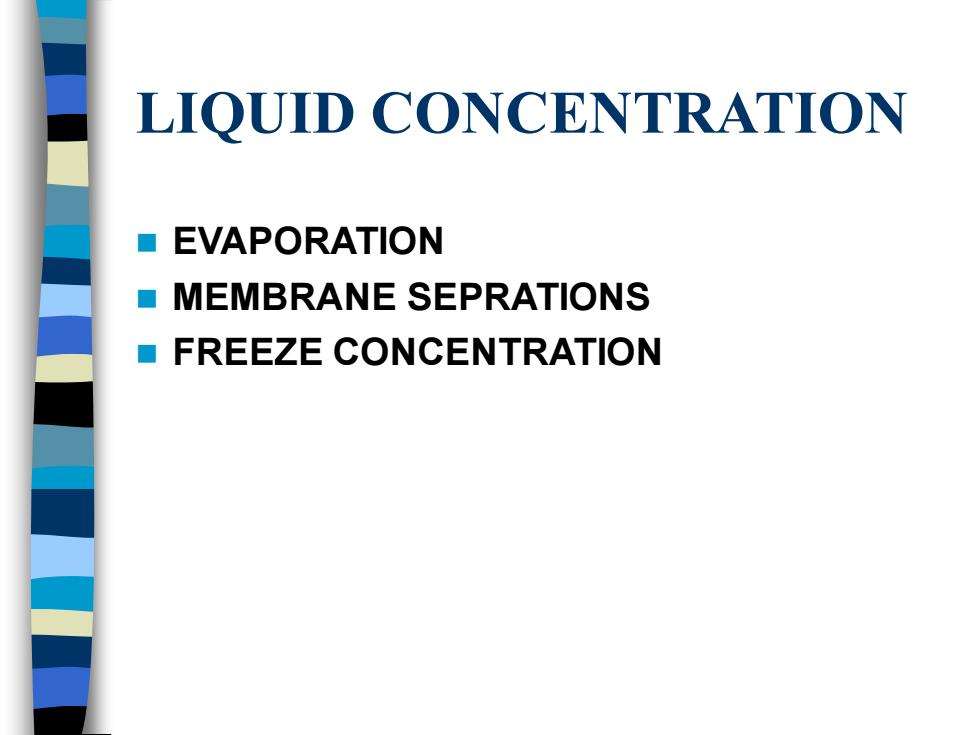
LIQUID CONCENTRATION ◼ EVAPORATION ◼ MEMBRANE SEPRATIONS ◼ FREEZE CONCENTRATION
LIQUID CONCENTRATION ◼ EVAPORATION ◼ MEMBRANE SEPRATIONS ◼ FREEZE CONCENTRATION
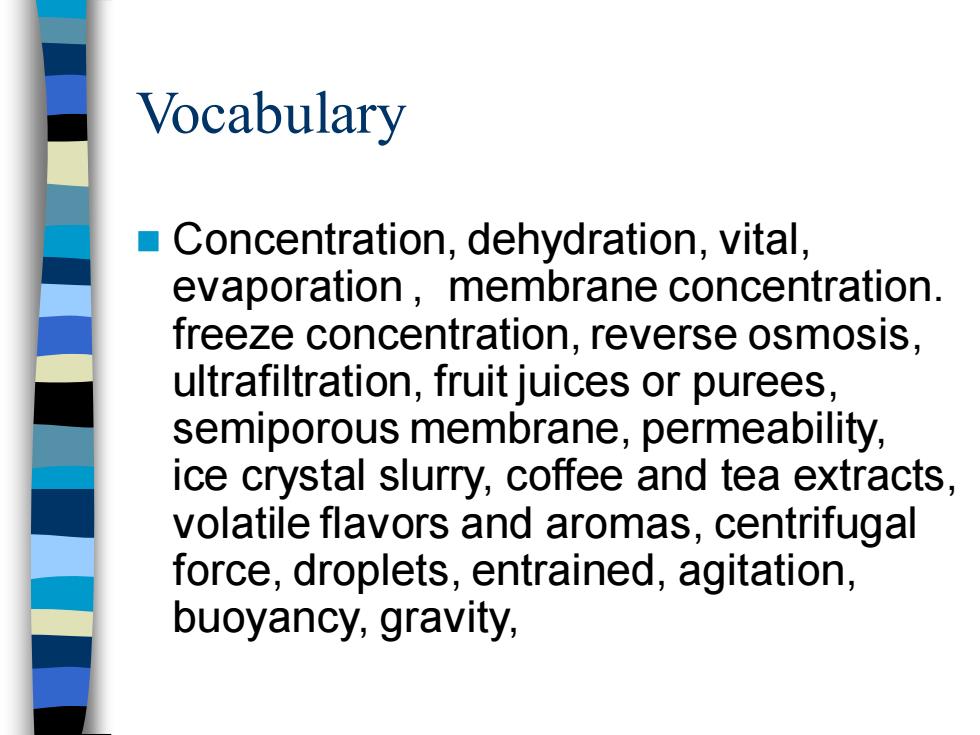
Vocabulary ◼ Concentration, dehydration, vital, evaporation , membrane concentration. freeze concentration, reverse osmosis, ultrafiltration, fruit juices or purees, semiporous membrane, permeability, ice crystal slurry, coffee and tea extracts, volatile flavors and aromas, centrifugal force, droplets, entrained, agitation, buoyancy, gravity
Vocabulary ◼ Concentration, dehydration, vital, evaporation , membrane concentration. freeze concentration, reverse osmosis, ultrafiltration, fruit juices or purees, semiporous membrane, permeability, ice crystal slurry, coffee and tea extracts, volatile flavors and aromas, centrifugal force, droplets, entrained, agitation, buoyancy, gravity
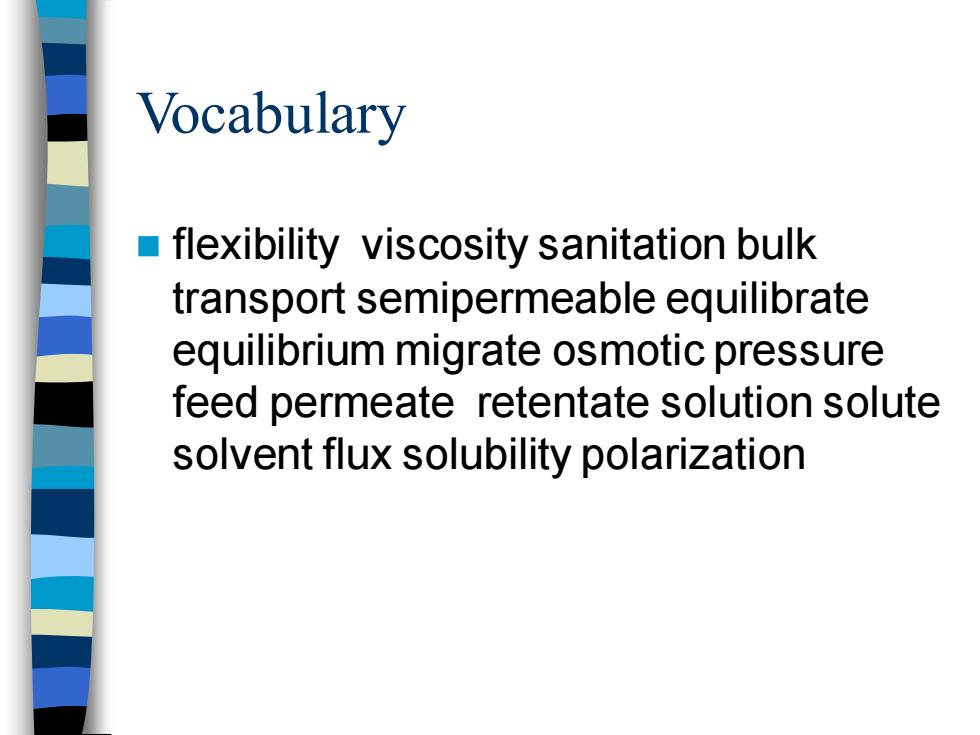
Vocabulary ◼ flexibility viscosity sanitation bulk transport semipermeable equilibrate equilibrium migrate osmotic pressure feed permeate retentate solution solute solvent flux solubility polarization
Vocabulary ◼ flexibility viscosity sanitation bulk transport semipermeable equilibrate equilibrium migrate osmotic pressure feed permeate retentate solution solute solvent flux solubility polarization
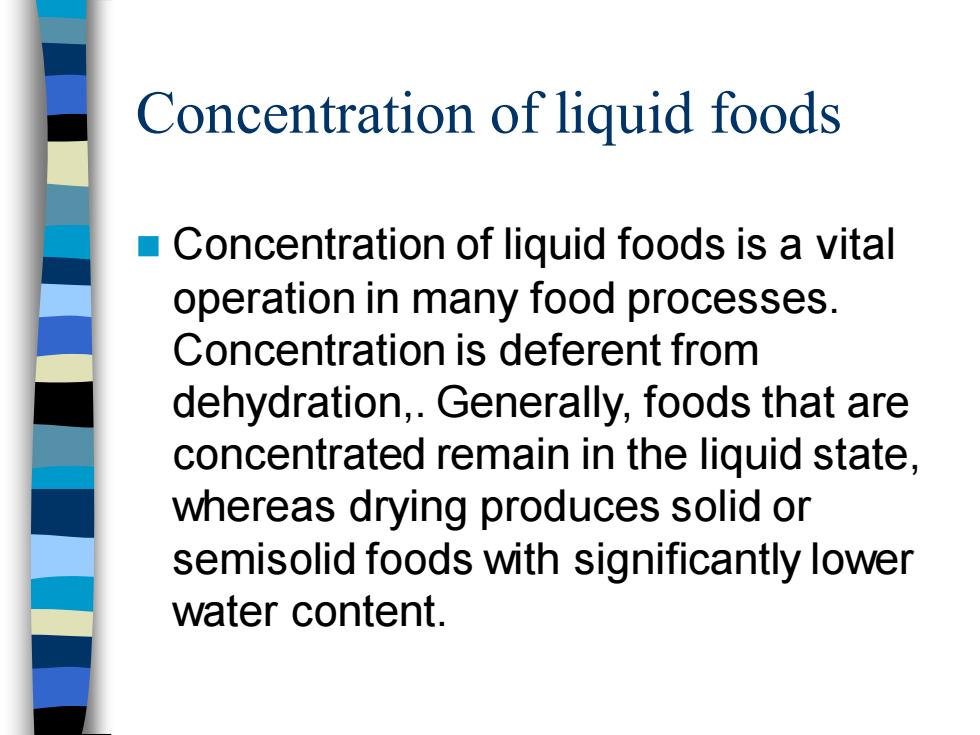
Concentration of liquid foods ◼ Concentration of liquid foods is a vital operation in many food processes. Concentration is deferent from dehydration,. Generally, foods that are concentrated remain in the liquid state, whereas drying produces solid or semisolid foods with significantly lower water content
Concentration of liquid foods ◼ Concentration of liquid foods is a vital operation in many food processes. Concentration is deferent from dehydration,. Generally, foods that are concentrated remain in the liquid state, whereas drying produces solid or semisolid foods with significantly lower water content
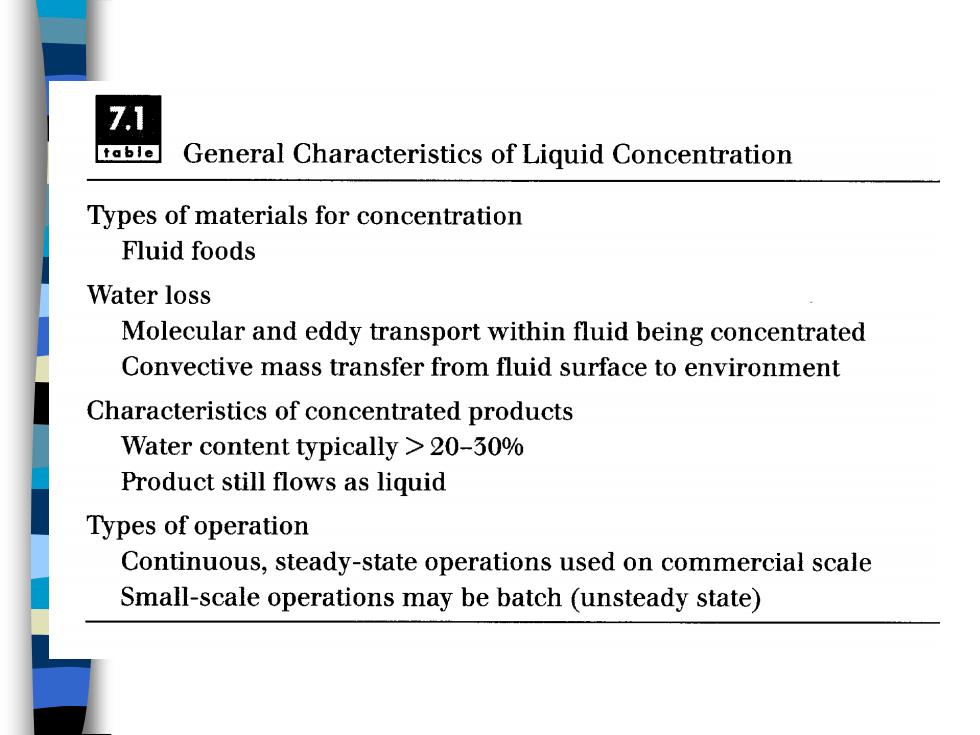
7.1 table General Characteristics of Liquid Concentration Types of materials for concentration Fluid foods Water loss Molecular and eddy transport within fluid being concentrated Convective mass transfer from fluid surface to environment Characteristics of concentrated products Water content typically >20-30% Product still flows as liquid Types of operation Continuous,steady-state operations used on commercial scale Small-scale operations may be batch (unsteady state)